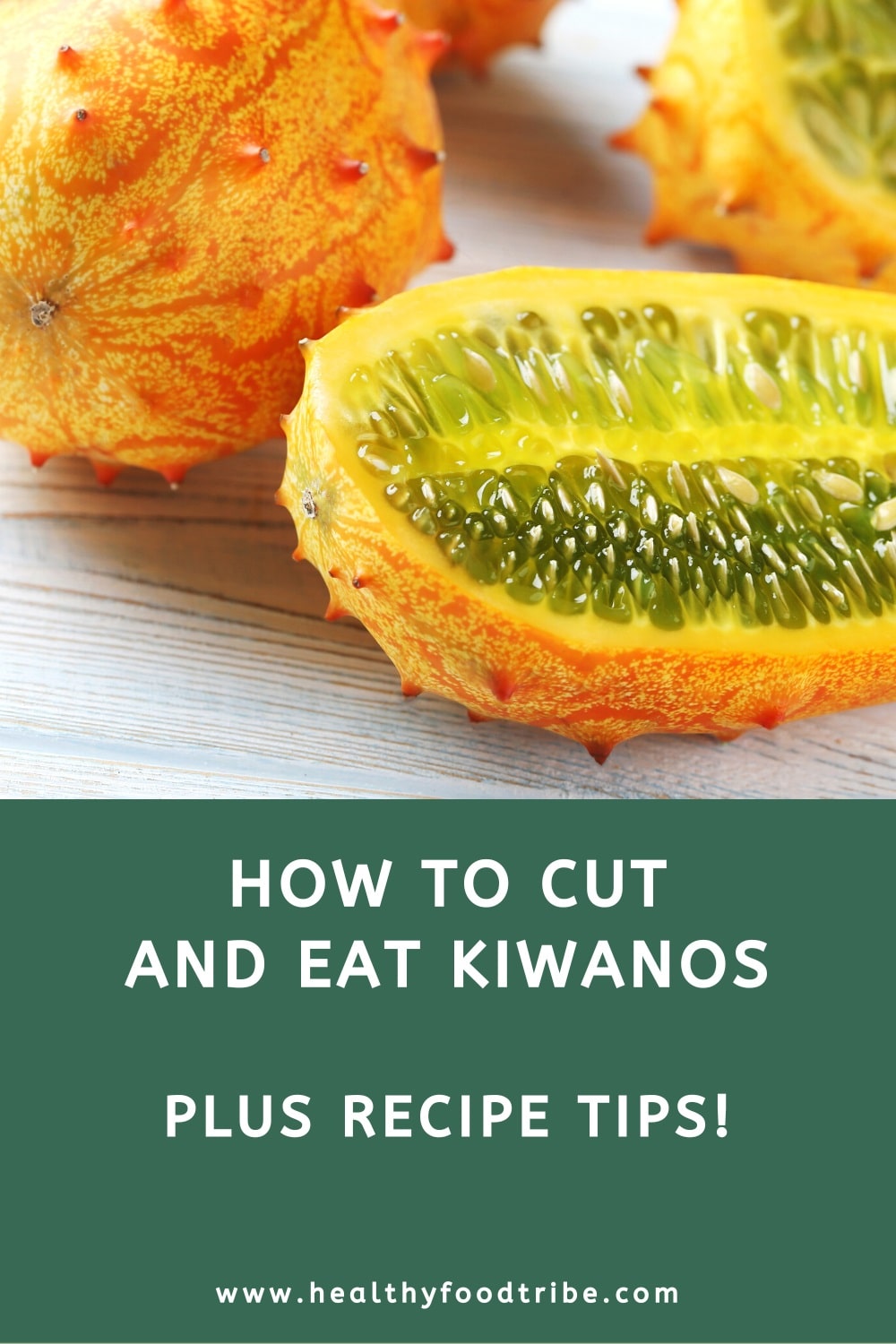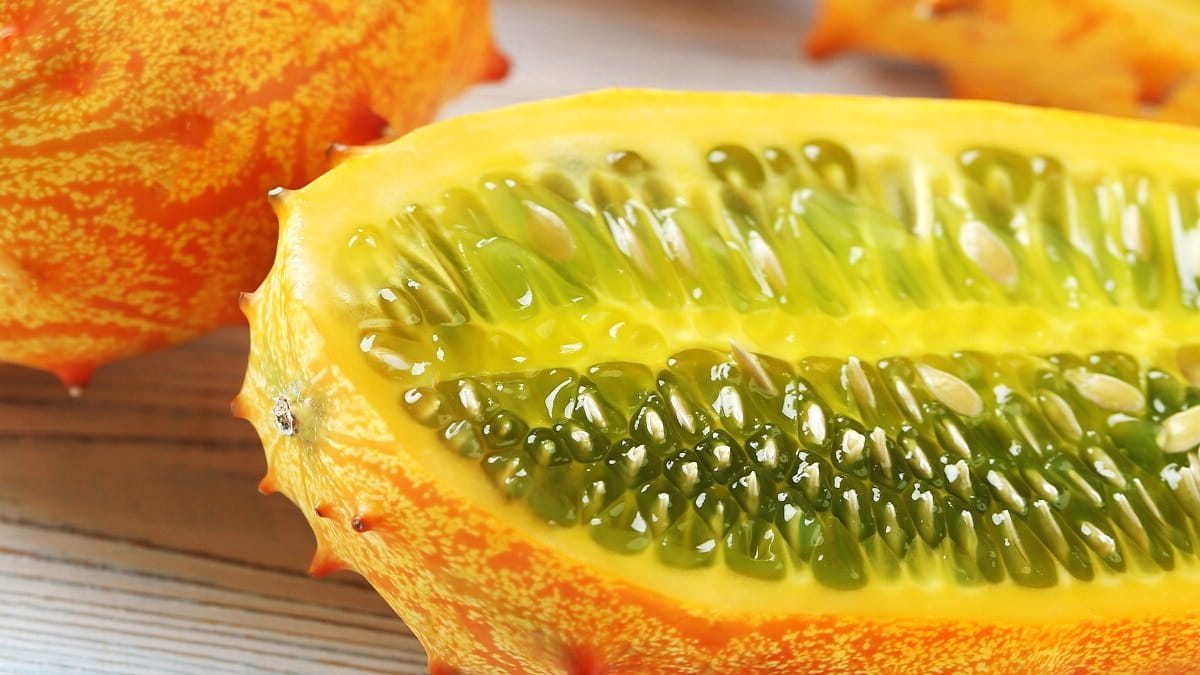Last updated: February 20, 2024
Learn how to cut and eat kiwanos with this step-by-step guide, plus recipe, selection, and storage tips for this delicious fruit.
Kiwano fruits, also known as kiwano melons, make a delicious and nutritious addition to your diet. If you can find them!
While this tropical fruit is related to cucumbers and melons, it has a texture and flavor all its own. Because of this, you can’t prepare a kiwano the same way you would these more familiar fruits.
In this article, I will show you how to cut and eat a kiwano fruit the right way so you can enjoy this unique, specialty produce at home.
How to Eat Kiwanos
Kiwanos, also known as horned melons or horned cucumbers, are native to Africa. They also grow readily in Australia, New Zealand, and subtropical regions of the US.
These spiky fruits are a part of the cucumber family and are closely related to melons. They start off green and ripen to bright yellow-orange.
Skin and Pulp
Their skin is more like that of a cucumber than a melon but with spiky growths covering the outside.
Inside, you’ll find a gelatinous, green pulp filled with numerous thin, edible seeds. These seeds are very similar to young cucumber seeds and don’t have much flavor on their own.
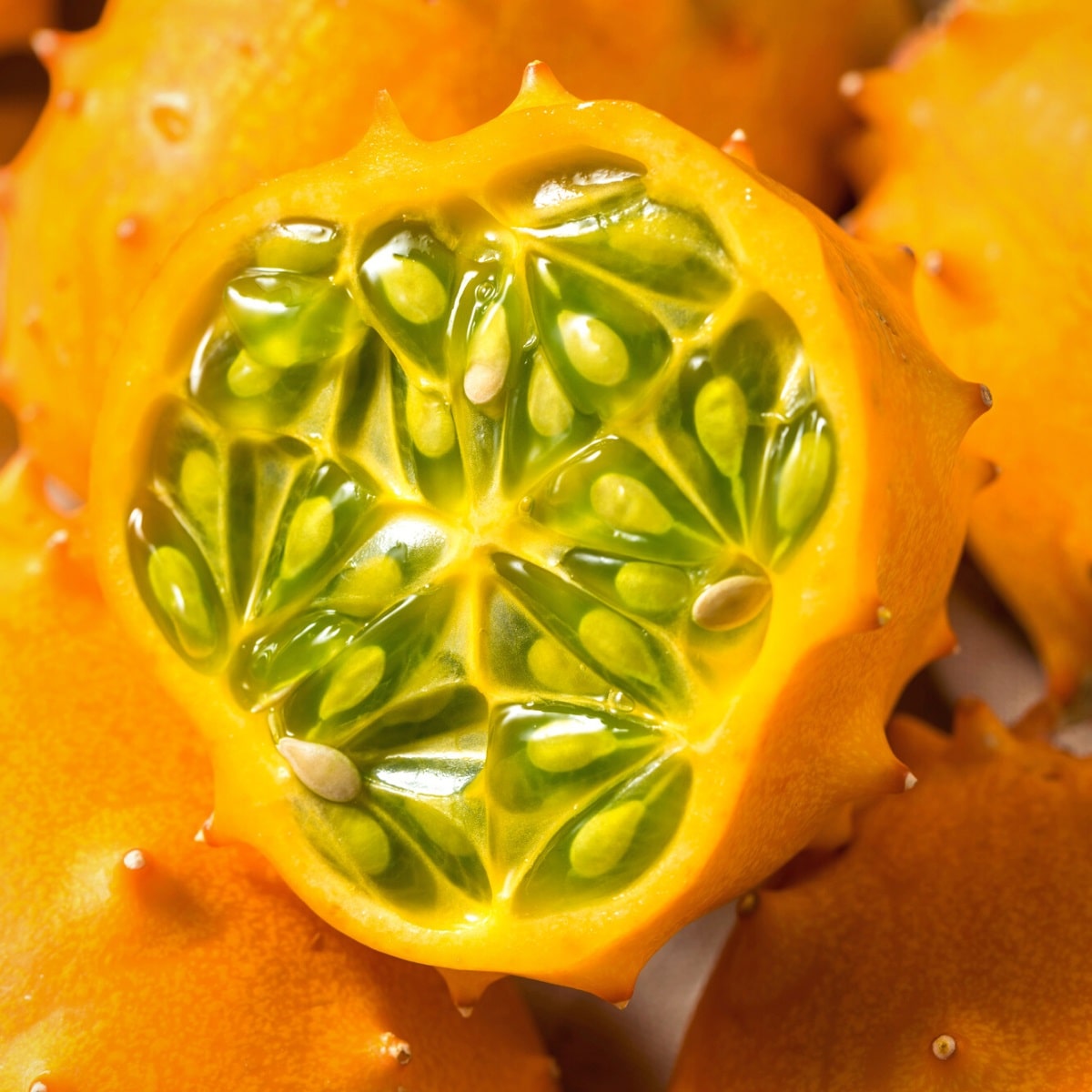
The runny jelly-like pulp has a light, bright flavor somewhere between a cucumber and a kiwi or passion fruit. Kiwanos aren’t overly sweet and, while technically a fruit, are more vegetable-like in flavor.
The skin of the kiwano melon is edible, but it is thicker than that of a cucumber, especially where the spikes are. This, combined with the runny pulp inside, makes eating these strange fruits a little tricky. This is most true of mature orange fruits, as the pulp tends to get runnier as horned melons ripen.
But don’t fret! By following the step-by-step instructions below, you’ll be a professional kiwano consumer in no time.
Steps for Cutting and Eating a Ripe Kiwano
Follow these steps to cut and eat a ripe kiwano fruit:
- Give the kiwano a good rinse with warm water to remove any dirt.
- Once cleaned, cut the kiwano in half lengthwise.
- Use a spoon to scoop out a bite full of refreshing pulp and seeds. Alternatively, use one half of the fruit as a glass and squeeze it such that you can drink the flesh.
- Eat and repeat. Much like a passion fruit, the seeds are fully edible and part of the textural experience of eating a kiwano.
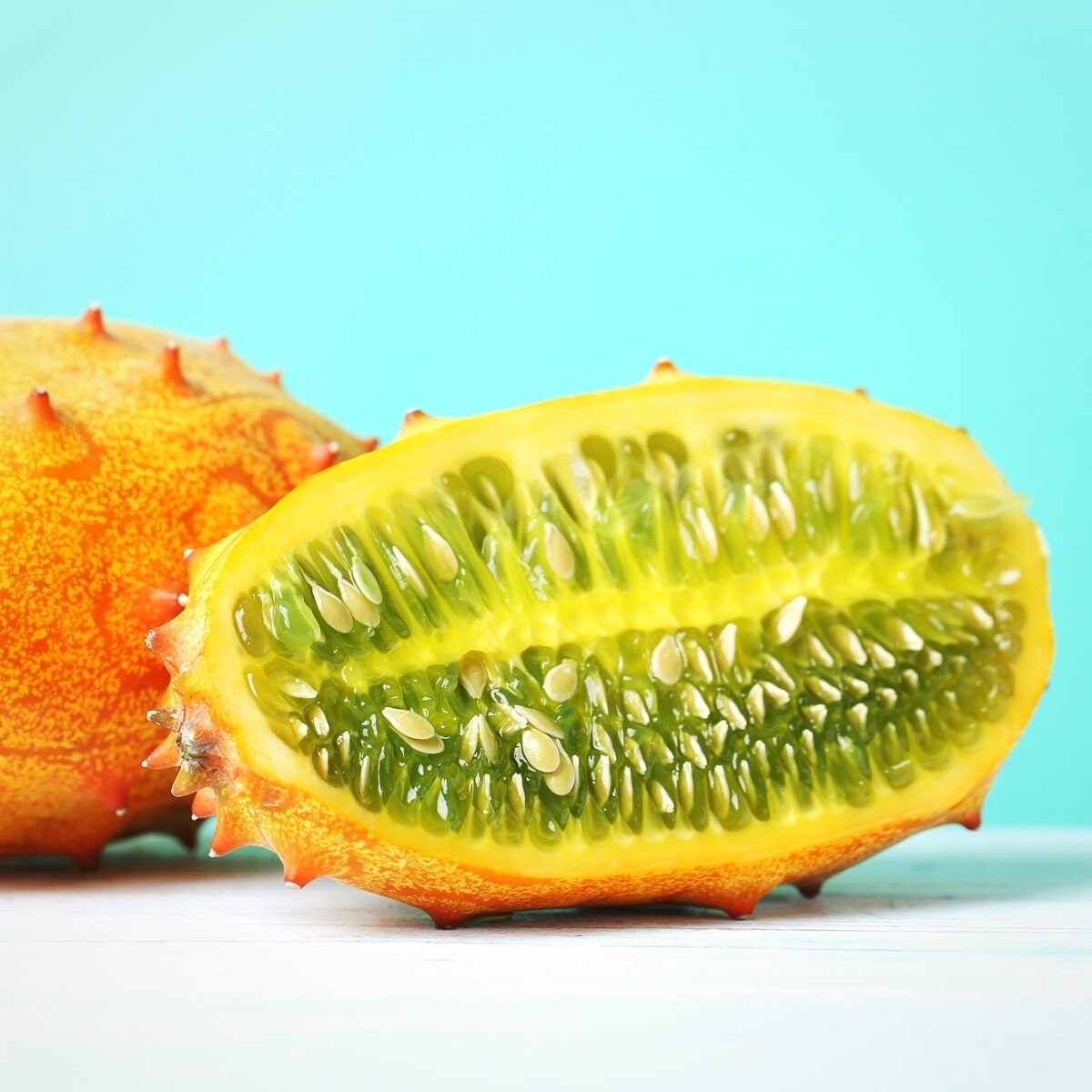
The above method works very well for cutting and eating very ripe kiwanos. But these fruits can be consumed at any point in the ripening process.
Younger, greener kiwanos aren’t as running as mature fruits. Their flavor is also less sweet, slightly tart, and much closer to that of a standard cucumber. For these reasons, it is possible to cut and use immature kiwanos in much the same way you would an English or garden cucumber.
Steps for Preparing a Young Kiwano Fruit
Follow these steps to cut and eat an immature, green, or yellow-green kiwano:
- Give the kiwano a good rinse with warm water to remove any dirt.
- Use a sharp veggie peeler to remove the spikes on the fruit.
- Lay the kiwano flat on a cutting board.
- Slice into rounds. Alternatively, you can slice firm kiwanos into long spears.
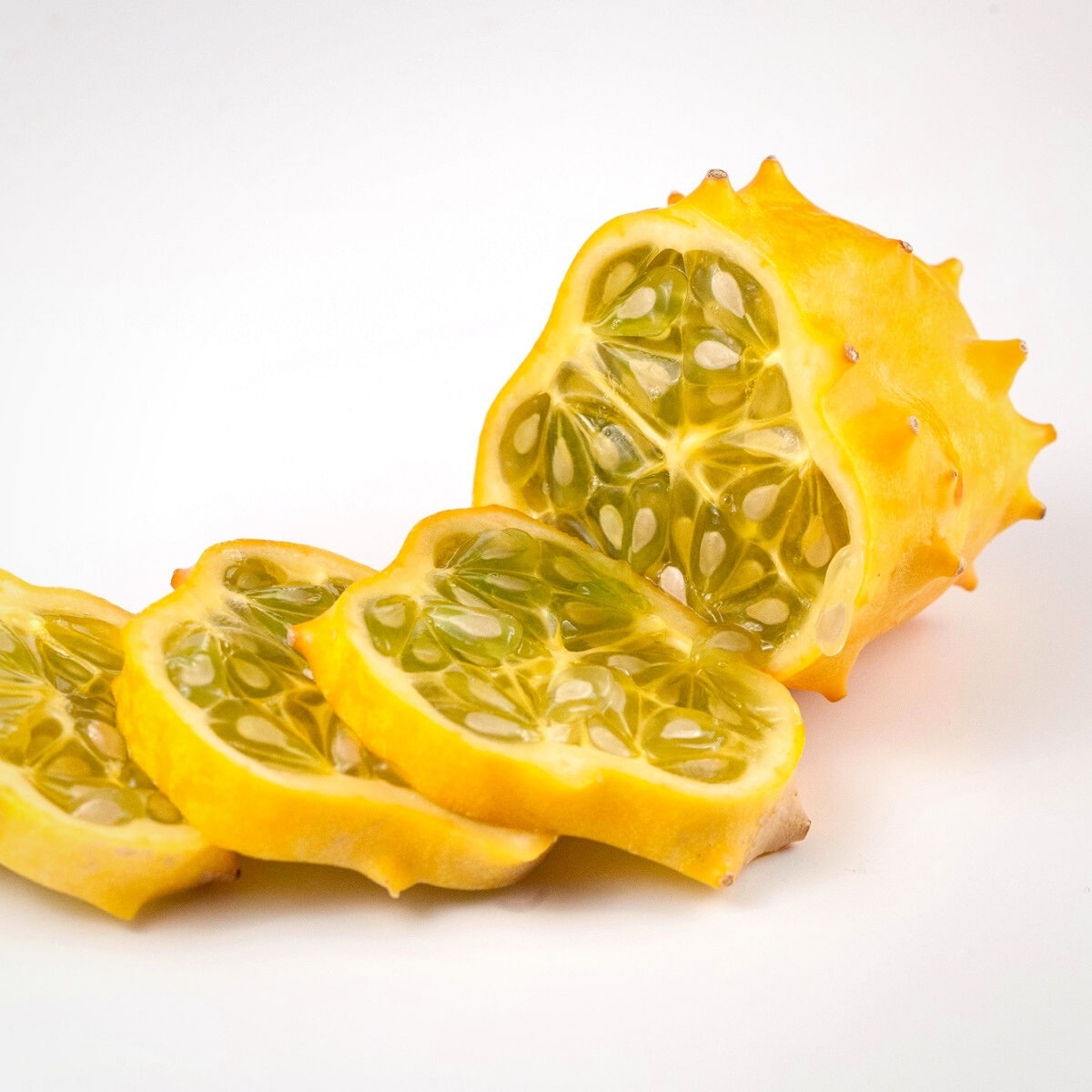
Immature kiwanos prepared this way make a great addition to veggie platters. They can also be eaten alone with a bit of salt and lemon juice sprinkled on top.
Keen to learn more about kiwanos? Read my guide to this orange spiky fruit, explaining its origins, nutritional profile, recipe tips, and much more!
Practical Tips
Now that you know how to cut and eat kiwano like a professional, here are a few more tips for selecting and working with this tropical cucumber.
Where to Find Kiwanos
Kiwanos are tropical fruits that require warm temperatures to grow. You can typically find them year-round in African markets in the central and southern regions of the country. You can also find them year-round in Australia and seasonally in many parts of New Zealand.
They are becoming more common in the US, but their growth requirements restrict them to only a few specific regions. They grow readily in Hawaii and can be cultivated in southern Florida, certain parts of the California coast, and southwestern Arizona.
Luckily, thanks to online exotic produce retailers, it is now possible to order Kiwano no matter where you live in the US.
How to Select a Kiwano Melon
Finding a ripe horned cucumber at the store is easy. Look for bright orange coloration and firm spikes with reddish ends. The body of the fruit should have some give but not be squishy.
Ripe fruits will have a sweeter flavor and runnier pulp and are great for eating with a spoon.
You can also eat unripe kiwanos. These are less sweet and taste more like a cucumber. Look for plump, firm, and green to greenish-yellow fruits for firmer pulp that can be sliced.
Recipe Tips
Ripe kiwano fruit can be eaten straight out of the peel, much like passion fruit. They can also be used to top yogurt or ice cream or mixed with lemon juice and drizzled over vegetable dips or salads.
The runny pulp is also suitable for adding some extra nutrition to smoothies or for juicing along with other vegetables.
Firmer kiwano fruits can be used in much the same way as cucumbers. They can be sliced and added to veggie trays and salads or used as an exotic sandwich topper.
Adding a little salt or lemon juice to sliced kiwano helps bring out the flavor and makes for a refreshing snack.
Storage Tips
When you get your kiwano home from the store, be sure to store it on the counter. Kiwano melons do not react well to cold temperatures and should not be put in the fridge. Green fruits will ripen to orange if you give them a few days.
Once the fruit has reached peak ripeness, it will only last a couple of days before going bad. Be sure to use your kiwano as soon as it turns bright orange.
If you have more kiwano than you can eat, scoop the extra pulp into an ice cube tray and freeze. Once frozen through, place the cubes in an airtight container and keep them frozen for up to 6 months.
